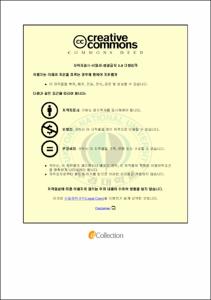구리(Cu) 노출에 의한 전복, Haliotis discus hannai의 기관별 축적 및 생화학적 변화
- Alternative Title
- Bioaccumulation and biochemical changes on the tissues of abalone, Haliotis discus hannai exposed to copper
- Abstract
- Copper(Cu) is an essential trace element for human and animals for a number of biochemical funtions. But Cu can have toxic effects especially on organisms at low anbient levels. The objective of this study was to investigate the effects of exposured Cu on growth, antioxidant enzyme(SOD, CAT) in the hepatopancreas and bioaccumulation of abalone (Haliotis discus hannai). Abalone were exposed to various concentration of Cu (0, 5, 10, 20, 40 ㎍/L).
Bioaccumulation of tissues, hepatopancreas, muscles and gills were measured. hepatopancreas and gills Cu concentration of abalone increases to extent during the 4 weeks accumulation time. But muscles showed no significant changes, with respect to control. These data indicate that abalone, Haliotis discus hannai hepatopancreas and gills can be considered adequate target tissues for waterborne exposured of Cu.
Weight growth rate of abalone exposed to Cu was significantly decreased in 20 and 40㎍/L groups compared to control. This study revealed that high Cu concentration (≥ 20㎍/ℓ) reduced growth of abalone. Cu induced significantly elevated SOD, CAT of hepatopancreas showed increasing tendency in 20, 40 ㎍/L.
Hemolymph were measured on total protein, glucose, magnesium, calcium, Aspartate aminotransferase(AST), alanine aminotransferase(ALT) and Alkaline phosphatase(ALP) in abalone exposed to Cu concentration. Magnesium (Mg), and total protein and glucose of abalone exposed to waterborne Cu was no significant difference from controls, but on the other hand AST, ALT activity and Ca of abalone exposed to waterborne Cu was significant changes after 4 weeks from 20, 40 ㎍/L compared to controls.
These data indicate that excessive waterborne Cu can affect the toxicity of xenbiotics to abalone through alterations in hepatopancreas and homolymph enzyme systems, and growth rate. Thus, environmental standard of Cu 20㎍/L, should be considered a potential source of variation in toxicological studies with abalone.
- Issued Date
- 2010
- Awarded Date
- 2010. 8
- Type
- Dissertation
- Publisher
- 부경대학교 대학원
- Alternative Author(s)
- Park Hee Ju
- Affiliation
- 부경대학교 대학원
- Department
- 대학원 수산생명의학과
- Advisor
- 강주찬
- Table Of Contents
- 목차ⅰ
Abstract ⅲ
Ⅰ. 서론 1
Ⅱ. 재료 및 방법 6
1. 실험동물 6
2. 실험조건 7
3. Bioaccumulation 분석 9
4. 성장률 측정 10
5. 생화학 분석 11
5-1. Hepatopancreas의 생화학 분석 11
5-2. Hemolymph의 생화학 분석 12
6. 유의성 검정 13
Ⅲ. 결과 14
1. 생체 내의 Cu 축적 14
1-1. Hepatopancreas 내의 생체 축적 14
1-2. Muscle 내의 생체 축적 16
1-3. Gill 내의 생체 축적 18
2. 성장률의 분석 20
2-1. WGR 분석 20
2-2. DISL 분석 22
3. Hepatopancreas 생화학 분석 24
3-1. Superoxide dismutase(SOD) 24
3-2. Catalase(CAT) 26
4. Hemolymph 생화학 분석 28
4-1. Phenoloxidase(PO) 28
4-2. Hemolymph 내 효소 30
4-3. Hemolymph 내 유기성분 34
4-4. Hemolymph 내 무기성분 36
Ⅳ. 고찰 38
Ⅴ. 요약 43
Ⅵ. 감사의 글 44
Ⅶ. 참고문헌 45
- Degree
- Master
- Files in This Item:
-
-
Download
 구리(Cu) 노출에 의한 전복, Haliotis discus hannai의 기관별 축적 및 생화학적 변화.pdf
기타 데이터 / 703.05 kB / Adobe PDF
구리(Cu) 노출에 의한 전복, Haliotis discus hannai의 기관별 축적 및 생화학적 변화.pdf
기타 데이터 / 703.05 kB / Adobe PDF
-
Items in Repository are protected by copyright, with all rights reserved, unless otherwise indicated.